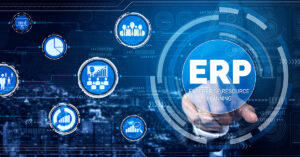
Why Cloud-Based Visitor Management Is Becoming the New Standard?
Have you ever wondered if there’s a smarter, safer, and faster way to manage visitors at your office? Traditional visitor

Have you ever wondered if there’s a smarter, safer, and faster way to manage visitors at your office? Traditional visitor

Connecting Human Resource Management Systems (HRMS) with Enterprise Resource Planning (ERP) systems is important for making business operations smoother, more

Best ERP HRMS Solution The dynamic environment of expanding businesses makes effective and thorough HR management essential. By utilizing technology,

In today’s increasingly competitive world, enterprise resource planning (ERP) systems have become a crucial component of business operations. They offer

The digital landscape has spiked the demand for digital tools. Modern-day firms seek to leverage technology for increased productivity in
WhatsApp us